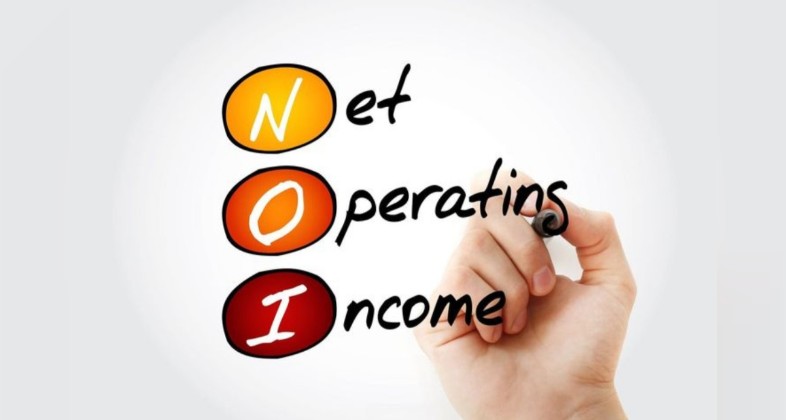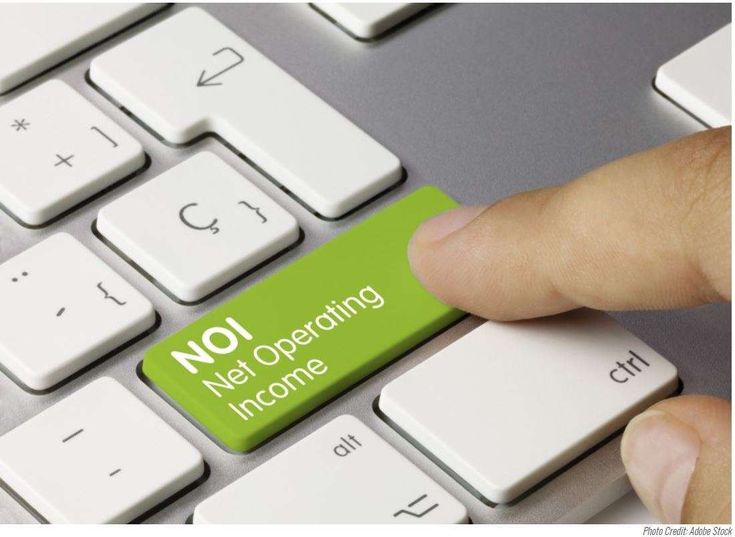How To Calculate Net Operating Income: A Comprehensive Guide

Are you thinking about investing in a property? One important thing to know is how much money it could make for you and you don’t have a idea How to Calculate Net Operating Income. The net operating income (NOI) tells you if renting out the property is worth the costs of owning and taking care of it.
NOI shows the cash left over after paying expenses like taxes, insurance, and maintenance. Learning how to calculate NOI can help you decide if an investment is a good idea.
This article explains what NOI is, shows you how to calculate it, gives an example calculation, and answers common questions about this formula. Knowing the NOI makes it easier to choose good investments.
What is Net Operating Income (NOI)?
Net Operating Income (NOI) is a financial metric used to assess the profitability of real estate investments or income-generating properties. It essentially reflects the income a property generates after subtracting the ongoing expenses directly tied to its operation.
It’s commonly employed in the commercial real estate industry to assess the profitability of investment properties such as office buildings, apartment complexes, or warehouses.
To calculate NOI, you aggregate all revenue sources and then subtract operating expenses directly tied to property management, including real estate taxes, insurance, utilities, and maintenance.
This calculation excludes other costs such as income tax, interest on debt, capital spending, and depreciation, as these are not considered direct operating expenses.

FORMULA Of NOI
“Net operating income=RR−OE“
where: RR=real estate revenue
OE=operating expenses
The Relationship Between NOI and EBITDA
NOI is analogous to earnings before interest, taxes, depreciation, and amortization (EBITDA), a widely utilized metric in various industries to determine a business’s underlying operational profitability.
While EBITDA is a broader measure of a company’s overall profitability, NOI specifically focuses on the profitability of an asset or investment property.
How To Calculate Net Operating Income: Step-by-Step
To accurately calculate NOI, it’s essential to follow a structured approach. Following these basic steps, one by one will allow you to calculate the net operating income for a property.
Step 1: Determine Gross Potential Income
The first step in calculating NOI is to determine the gross potential income (GPI) of the asset or investment property. GPI represents the maximum revenue that the property can generate if all rental spaces are occupied and all rents are paid in full.
For a rental property, GPI is calculated by multiplying the total rentable square footage by the rental rate per square foot.
Additionally, you should include any other income sources directly related to the property, such as fees from vending machines or parking facilities.
Step 2: Subtract Vacancy and Credit Losses
In the real world, properties rarely operate at 100% occupancy, and there may be instances of unpaid rent or delinquencies. To account for these factors, you need to subtract vacancy losses and credit losses (unpaid rents) from the GPI to arrive at the gross operating income (GOI).
Vacancy losses can be estimated based on historical data or industry benchmarks for the specific property type and location.
Credit losses can be calculated by analyzing past payment patterns and accounting for any anticipated delinquencies.
Step 3: Identify Operating Expenses
Operating expenses are the costs directly associated with maintaining and operating the asset or investment property. These expenses typically include:
- Property taxes
- Property insurance
- Utilities (water, electricity, gas, etc.)
- On-site management and staff salaries
- Maintenance and repairs
- Landscaping and groundskeeping
- Security services
- Advertising and marketing (for rental properties)
It’s crucial to carefully identify and account for all relevant operating expenses to ensure an accurate NOI calculation.
Step 4: Calculate Net Operating Income
With the gross operating income (GOI) and operating expenses in hand, you can now calculate the net operating income using the following formula:
NOI = Gross Operating Income (GOI) – Operating Expenses
The resulting figure represents the net operating income, which serves as a measure of the profitability of the asset or investment property after accounting for all direct operating expenses.

Factors Affecting Net Operating Income
While the NOI calculation itself is straightforward, several factors can influence the final figure. Understanding these factors can help you make well-informed decisions and adjust your strategies accordingly.
- Rental Rates: Higher rental rates directly translate to increased income for the property. Factors like location, property amenities, and market demand can influence rental rates.
- Occupancy Rate: A higher occupancy rate means more units are rented out, leading to greater income generation. Effective marketing and competitive rents can help maintain high occupancy.
- Additional Income Streams: Revenue from sources like parking fees, laundry services, or vending machines can contribute to the overall NOI.
- Operating Expenses: These directly affect NOI. Significant expenses like property taxes, insurance, maintenance, and utilities can eat into profits. Negotiating lower rates, implementing energy-saving measures, and proactive maintenance can help control these costs.
- Property Management Fees: If you hire a property management company, their fees become an operational expense that reduces NOI.
- Vacancy Rates: Vacant units generate no rental income, impacting NOI negatively. Effective tenant screening and competitive rents can minimize vacancies.
- Market Conditions: Economic conditions and overall rental market trends can affect rental rates and occupancy rates, impacting NOI.
- Local Regulations: Changes in property taxes, building codes, or rent control measures can influence operating expenses or rental income, affecting NOI.
Additionally, regional factors such as housing or office space supply and demand can influence vacancy rates and rental prices, affecting the NOI.
Applications of Net Operating Income
Understanding and accurately calculating NOI has several practical applications in the business and real estate worlds.
Investment Analysis and Valuation
NOI is very important when looking at how good an investment property is and figuring out how much it is worth.
Investors and lenders often use the capitalization rate (cap rate) to evaluate the potential return on investment (ROI) of a property. The cap rate is calculated by dividing the NOI by the current market value of the property.
A higher cap rate generally indicates a higher potential return, while a lower cap rate suggests a lower return. By analyzing the NOI and cap rate, investors can assess the profitability and viability of a potential investment opportunity.
Financing and Loan Qualification
Lenders and financial institutions rely heavily on NOI calculations when evaluating loan applications for commercial real estate or business acquisitions.
The debt-service coverage ratio (DSCR), calculated by dividing the NOI by the annual debt service (interest and principal payments), is a critical metric used to determine the borrower’s ability to repay the loan.
A DSCR above 1 indicates that the NOI exceeds the debt service obligations, making the investment or acquisition financially viable. Lenders often have minimum DSCR requirements for loan approval, underscoring the importance of accurate NOI calculations.
Benchmarking and Performance Evaluation
NOI can be used as a benchmarking tool to compare the performance of similar properties or investments within a specific market or industry.
By analyzing NOI figures, property managers, investors, and business owners can identify areas for improvement, implement cost-saving measures, or adjust rental rates or pricing strategies to enhance profitability.
Pro Tip for aspiring entrepreneurs: When evaluating potential small business ideas, consider the feasibility of achieving a healthy NOI. Research industry benchmarks for NOI in your target area to understand profitability expectations. Calculating projected NOI during your business planning phase can help assess the financial viability of your venture.
Wrapping Up
Net operating income (NOI) is a number that shows how much money a property makes. To get the NOI, you take all the money the property makes from rent and other things. Then you subtract all the costs of running the property, like repairs, taxes, and utilities.
A high NOI means the property makes a lot of money after paying the expenses. A low NOI means it doesn’t make much money once you pay all the costs.
The NOI number tells the owner if owning and maintaining the property is worth it based on how much money is actually made. If the NOI is high, the property is profitable. If it’s low, the owner may not be making enough money to cover their costs.
Net Operating Income FAQs
To further clarify common questions and misconceptions surrounding NOI, let’s address some frequently asked questions:
1. Is net operating income the same as profit?
No, net operating income is not the same as profit or net income. NOI is a measure of profitability specifically for assets or investment properties, but it does not account for other expenses such as debt interest, income taxes, capital spending, or depreciation and amortization.
2. How is net operating income calculated?
Net operating income is calculated by subtracting operating expenses from gross operating income (GOI). GOI is derived by subtracting vacancy losses and credit losses (unpaid rents) from gross potential income (GPI), which represents the maximum revenue a property can generate if fully occupied and all rents are paid.
3. What is a good net operating income percentage?
There is no universally accepted “good” net operating income percentage, as it can vary depending on the industry, property type, and market conditions.